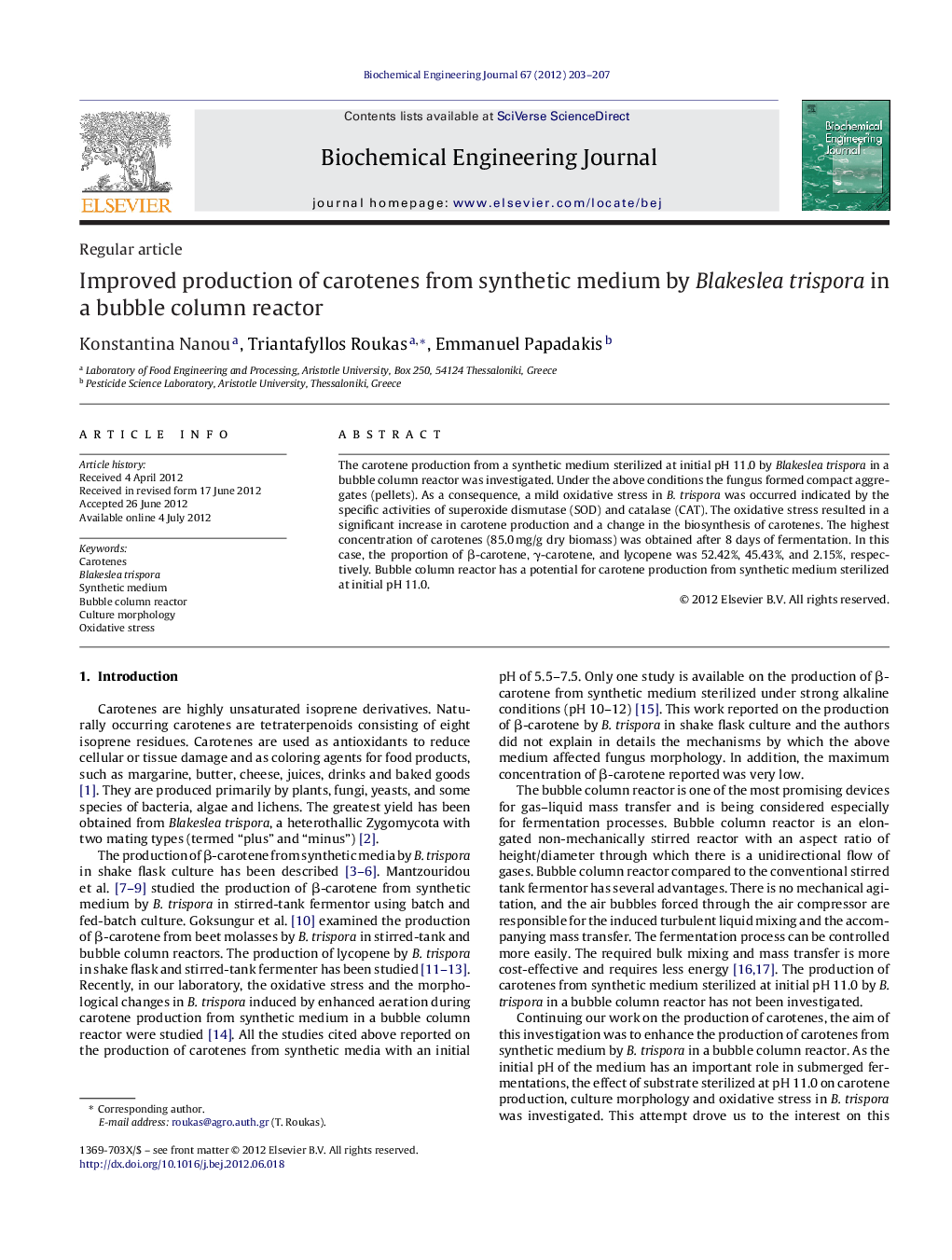| Article ID | Journal | Published Year | Pages | File Type |
|---|---|---|---|---|
| 3522 | Biochemical Engineering Journal | 2012 | 5 Pages |
The carotene production from a synthetic medium sterilized at initial pH 11.0 by Blakeslea trispora in a bubble column reactor was investigated. Under the above conditions the fungus formed compact aggregates (pellets). As a consequence, a mild oxidative stress in B. trispora was occurred indicated by the specific activities of superoxide dismutase (SOD) and catalase (CAT). The oxidative stress resulted in a significant increase in carotene production and a change in the biosynthesis of carotenes. The highest concentration of carotenes (85.0 mg/g dry biomass) was obtained after 8 days of fermentation. In this case, the proportion of β-carotene, γ-carotene, and lycopene was 52.42%, 45.43%, and 2.15%, respectively. Bubble column reactor has a potential for carotene production from synthetic medium sterilized at initial pH 11.0.
► The fungus B. trispora grown in a bubble column reactor formed pellets. ► This resulted in a mild oxidative stress in B. trispora. ► The oxidative stress increased significantly the carotene production. ► Bubble column reactor was a useful fermentation system for carotene production.
